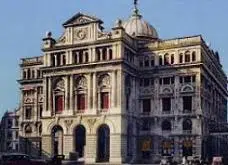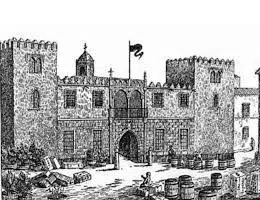 The idea of a contracting house was used in ancient times to name the establishment whose function was to control the transit of goods in the Spanish Empire . To meet this objective, the contracting houses were responsible for keeping a record of commercial transactions .
The idea of a contracting house was used in ancient times to name the establishment whose function was to control the transit of goods in the Spanish Empire . To meet this objective, the contracting houses were responsible for keeping a record of commercial transactions .
It can be said that a contracting house was a public building that allowed merchants to meet, who negotiated different deals . These establishments were also known as lonjas , whose etymological root is found in the French term laubja , which passed into French as loge ( "chamber" ) and then into Catalan as llonja .
La Lonja de Barcelona , whose creation dates back to the 14th century , is one of the oldest trading houses known. Zaragoza and Bilbao are other cities that had important contracting houses.
In 1503, the Real Casa de la Contratación de Indias emerged with headquarters in Seville , whose specific objective was the regulation of trade between Spain and the American colonies . This institution had the objective of promoting interoceanic commercial activity within a legal framework.
The contracting house, in this way, was the governing body that managed traffic with the so-called Indies . All merchandise arriving from America to Spain had to go through the Casa de Contratación in Seville and pay the corresponding tax . It was also not possible to send goods from Spain to America without passing through the establishment.
Regarding the foundation and functions of the Casa de la Contratación de Indias, we must go back to the year 1493, when Christopher Columbus traveled to the American continent for the second time; Since then, all matters related to the "conquest of the New World" had been relegated to Juan Rodríguez Fonseca, archdeacon of the cathedral of Seville (also known as archdeacon , the archdeacon was the most important deacon within a cathedral). .
Rodríguez Fonseca was, in turn, chaplain and was part of the group of people trusted by Queen Isabel I of Castile, known as Isabel the Catholic . Some time later, he was promoted to the episcopal sees of Burgos, Palencia and Badajoz.
 After a decade of having maintained this organization for matters related to the New World, it became very evident that all this work could no longer be in the hands of a single individual, and that is why they decided to give way to the creation of the first house of recruitment.
After a decade of having maintained this organization for matters related to the New World, it became very evident that all this work could no longer be in the hands of a single individual, and that is why they decided to give way to the creation of the first house of recruitment.
According to the historian Clarence H. Haring, although Rodríguez Fonseca lost absolute power over commercial matters between Spain and America, whose position was called superintendent , he remained at court carrying out tasks typical of a Minister, in this case of the colonies. , until in 1524 the Council of the Indies was created, the most important Indian administration body, since it was in charge of advising the King in the executive, legislative and judicial spheres.
The documents that have recorded the process of creation of the contracting house date back to the year 1502; According to the research work of Ernesto Schaffër , a well-known historian of German origin, at first it is likely that the emergence of this building was promoted by Francisco Pinelo , a Genoese merchant who knew in depth Indian affairs. Precisely, Pinelo signed, together with Isabel la Católica, a Royal Provision in 1503 that approved a series of Ordinances concerning the contracting house and other related issues.
Since the emergence of consulates , contracting houses began to lose importance. Ordinances and regulations began to be directed to these consulates, while merchants created other types of corporations to meet.
